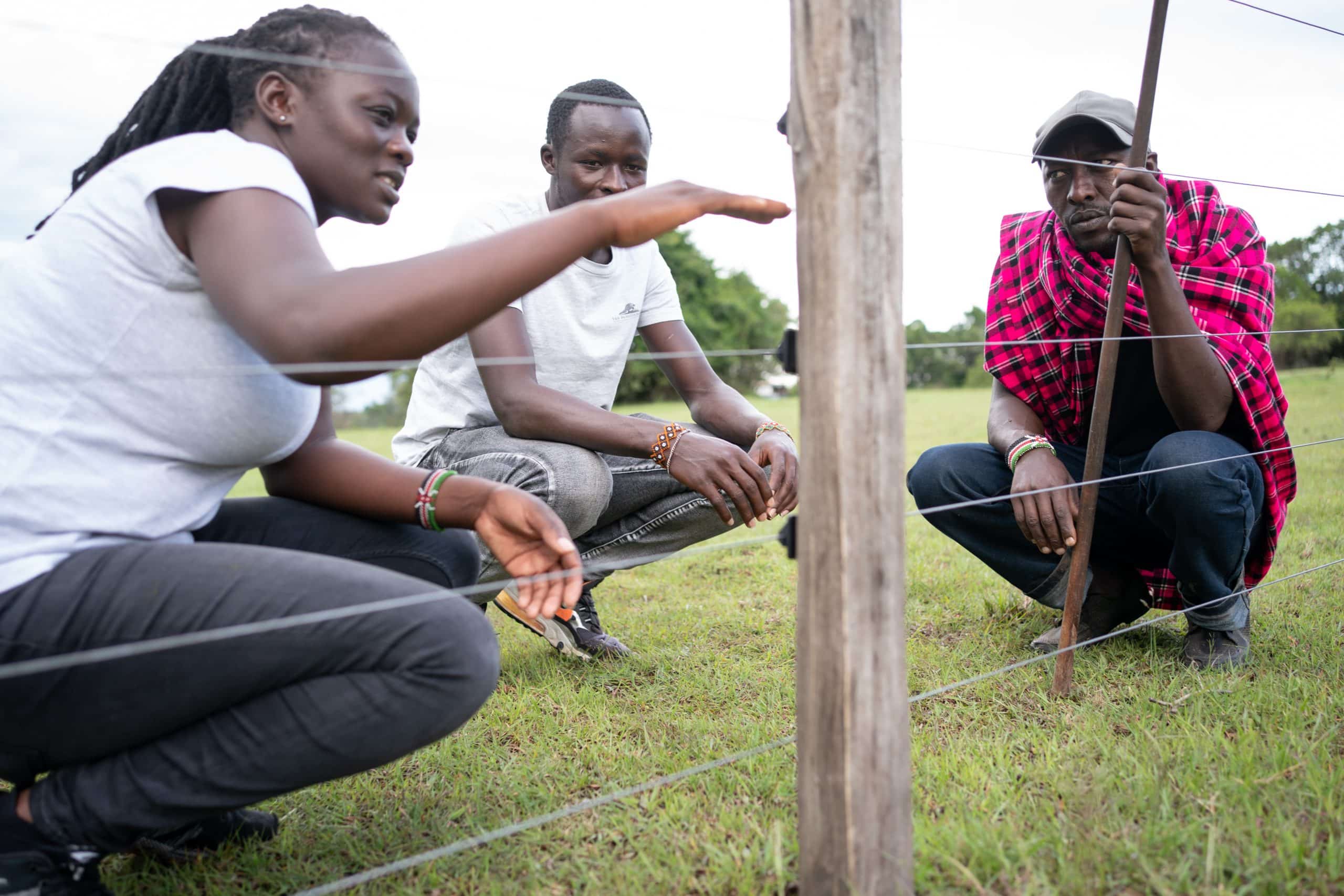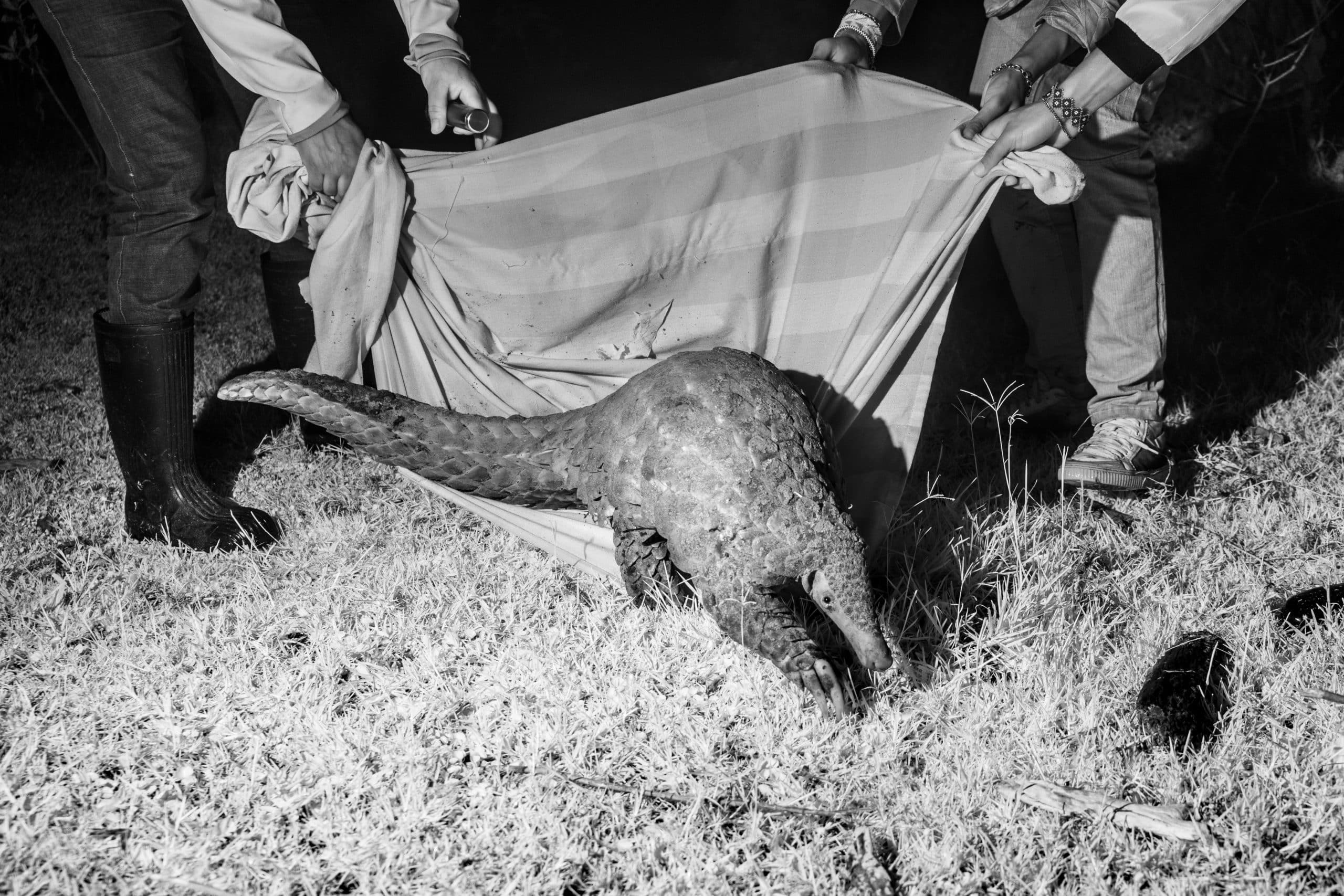Claire Okell walked along the wire fence surrounding a pasture filled with cattle. On the other side of it stood a forest, crucial habitat for giant pangolins on Kenya’s Oloololo Escarpment, a plateau overlooking the storied Maasai Mara National Reserve. The country’s last giant pangolins—about 30 individuals—live here alongside private landowners, who erect electric fences to keep their crops and livestock safe from larger wildlife. But these fences can be lethal to giant pangolins, which are easily electrocuted when crossing beneath them. To protect this delicate pocket of pangolins, Claire and her team at The Pangolin Project (TPP) needed to turn these landowners into fellow stewards of this pangolin habitat. Thanks to critical and timely support from the Pangolin Crisis Fund (PCF), TPP has improved the fortunes of these little giants.
TPP has tagged and monitored Kenya’s last giant pangolins since 2022. In late 2023, the PCF gave a grant to help TPP significantly scale up their work, allowing Claire’s team to recruit members of local communities to act as pangolin guardians. Over the past year, these guardians visited 1,800 households to raise awareness about the dangers that electric fences and destructive land clearance pose to pangolins. TPP also spoke with landowners about deactivating the electricity along their lowest fence wires, or removing those wires entirely, and preserving the plateau’s remaining forests. Through sustained community outreach, TPP convinced farmers to remove nearly 45 miles of electric fencing, created 3,300 acres of community conservation area, and made plans to secure 25,000 additional acres of giant pangolin forest.
In a single year, TPP has reduced pangolin electrocution fatalities from several each month to only two incidents this year, and as their environment has become safer, Kenya’s last giant pangolins are starting to breed. With continued PCF support, Claire and TPP will expand their work with Oloololo communities so this tiny population of giants can continue to grow.



